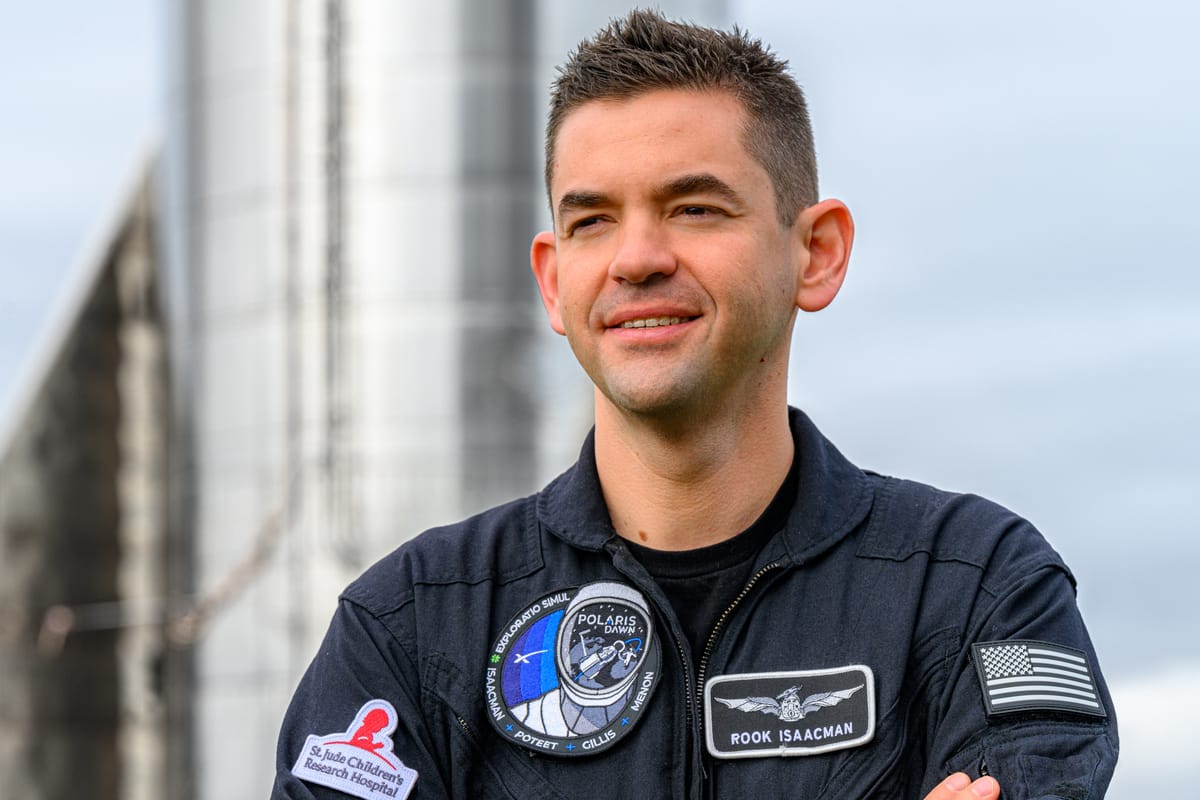Jared Isaacman's Revolutionary Vision: Nuclear-Powered Spacecraft and Expanded Dragon Capsules Could Transform NASA's Future
President-elect Trump's nomination of billionaire astronaut Jared Isaacman as NASA Administrator has sent shockwaves through the space community, as the Shift4 Payments CEO brings ambitious plans that could fundamentally reshape America's space program. From nuclear propulsion systems to seven-seat Dragon capsules and an accelerated timeline for the Artemis moon missions, Isaacman's vision represents a dramatic departure from NASA's traditional approach.
A New Era of Space Leadership
Jared Isaacman isn't your typical NASA administrator nominee. The 41-year-old entrepreneur who founded Shift4 Payments at age 16 has already made history by commanding two private SpaceX missions, including the groundbreaking Polaris Dawn mission where he became the first private citizen to conduct a spacewalk. His nomination signals a potential shift toward more aggressive, commercially-minded space exploration strategies.
Unlike previous administrators who rose through government or military ranks, Isaacman brings a unique blend of entrepreneurial success, personal space experience, and deep pockets. His close relationship with Elon Musk and SpaceX could prove instrumental in implementing his bold vision for America's space future.
Nuclear Propulsion: The Game-Changing Technology
Perhaps the most revolutionary aspect of Isaacman's plan involves developing nuclear-powered spacecraft. This technology could slash travel times to Mars from nine months to as little as 45 days, fundamentally changing the economics and safety of deep space missions.
Nuclear thermal and nuclear electric propulsion systems offer several advantages over traditional chemical rockets:
- Increased efficiency: Nuclear engines can provide twice the specific impulse of chemical rockets
- Reduced mission costs: Shorter travel times mean less life support supplies and reduced radiation exposure
- Enhanced cargo capacity: More efficient propulsion allows for heavier payloads
- Enabling deeper exploration: Nuclear power could make missions to Jupiter, Saturn, and beyond more feasible
NASA has dabbled with nuclear propulsion concepts since the 1960s, but regulatory hurdles and public concerns have prevented serious development. Isaacman's business background and political connections could help navigate these challenges.
Expanding Dragon's Capabilities
Another cornerstone of Isaacman's vision involves modifying SpaceX's Dragon capsule to accommodate seven crew members instead of the current four. This seemingly simple change could have profound implications for NASA's operations:
The expanded capacity would allow for larger crew rotations to the International Space Station, reducing the number of launches needed and potentially saving hundreds of millions of dollars annually. It could also enable more diverse mission profiles, including tourist flights alongside professional astronauts, helping to offset costs through commercial partnerships.
SpaceX has already proven the Dragon's versatility through cargo missions, crew rotations, and private flights. Expanding its capacity represents a natural evolution that could cement Dragon as NASA's workhorse for low-Earth orbit operations.
Accelerating Artemis: A New Moon Race
Isaacman has been vocal about the need to accelerate the Artemis program, which aims to return Americans to the lunar surface. The current timeline targets a 2026 landing, but delays have plagued the program. Isaacman's approach would likely involve:
- Streamlining contractor relationships: Reducing bureaucracy and accelerating decision-making
- Leveraging commercial partnerships: Expanding SpaceX's role beyond the lunar lander
- Parallel development paths: Pursuing multiple technical solutions simultaneously
- Risk acceptance: Embracing a more aggressive testing philosophy similar to SpaceX's approach
His experience with SpaceX's rapid development culture could inject new urgency into Artemis, potentially achieving a lunar landing before China's targeted 2030 mission.
Challenges and Controversies
Despite the exciting possibilities, Isaacman's plans face significant hurdles. Nuclear propulsion development requires extensive safety testing and regulatory approval. Environmental groups have already expressed concerns about launching nuclear materials. The expanded Dragon concept needs NASA certification, a process that typically takes years.
Critics also worry about potential conflicts of interest given Isaacman's close ties to SpaceX. Balancing commercial partnerships with traditional contractors like Boeing and Lockheed Martin will require delicate political maneuvering.
A Bold Future for American Space Exploration
Jared Isaacman's nomination represents a potential paradigm shift for NASA. His combination of personal space experience, entrepreneurial success, and ambitious technical vision could accelerate America's space capabilities dramatically. While challenges remain, his plans for nuclear propulsion, expanded crew capacity, and accelerated lunar missions offer a compelling roadmap for maintaining American space leadership.
Whether Isaacman can navigate the political complexities of Washington while implementing such revolutionary changes remains to be seen. But one thing is certain: NASA under Isaacman would look radically different from the agency we know today.
SEO Excerpt: Jared Isaacman's nomination as NASA Administrator brings revolutionary plans including nuclear-powered spacecraft, seven-seat Dragon capsules, and accelerated Artemis missions that could transform America's space program.
SEO Tags: NASA, Jared Isaacman, nuclear propulsion, SpaceX Dragon, Artemis program, space exploration, Trump administration, commercial spaceflight, moon missions, Mars missions
Suggested Illustrations:
- Header Image: Jared Isaacman in spacesuit during Polaris Dawn spacewalk
- Placement: After headline
- URL: Search for official Polaris/SpaceX imagery
- Alt prompt: "Astronaut performing spacewalk with Earth in background, commercial spacesuit design, cinematic lighting"
- Nuclear Spacecraft Concept: Artist rendering of nuclear-powered spacecraft
- Placement: After "Nuclear Propulsion" section
- Prompt: "Futuristic spacecraft with visible nuclear propulsion system, glowing blue exhaust, Mars in background, technical diagram style, highly detailed"
- Dragon Capsule Comparison: Side-by-side current vs. seven-seat Dragon
- Placement: After "Expanding Dragon's Capabilities" section
- Prompt: "Technical cutaway diagram showing SpaceX Dragon capsule interior, comparing 4-seat vs 7-seat configuration, clean technical illustration style"
- Artemis Mission Timeline: Infographic showing accelerated timeline
- Placement: After "Accelerating Artemis" section
- Prompt: "Timeline infographic showing moon mission milestones 2024-2030, modern design, NASA and SpaceX logos, lunar surface in background"
